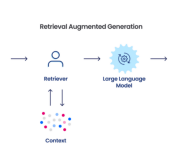How To Develop a Knowledge Management System for Your Company
In an increasingly data-driven world, a Knowledge Management System (KMS) serves as the backbone of an organization’s intellectual framework. It’s vital to ensure the right information is accessible to the right people at the right time. When considering how to develop a knowledge management system, it can be challenging but the rewards in enhanced efficiency, improved problem-solving capabilities, and the preservation of institutional knowledge are immense. Keep reading to gain valuable insights into the world of KMS and how to successfully integrate one into your business operations.
Understanding Knowledge Management System Essentials

Before diving into the development of a Knowledge Management System, you need to understand its core components. A KMS is designed to gather, organize, store, and share knowledge within an organization. This can range from documented information, procedures, and systems to the tacit knowledge retained by individual employees. Regardless of the form, efficient knowledge management can streamline processes and improve decision-making.
The idea of knowledge management is not a new one, but the approaches and technologies involved are continually evolving. Recognizing different types of knowledge—explicit, tacit, and implicit—is a fundamental step toward constructing a KMS. These distinctions help in determining the methods and tools to be used for knowledge capture and dissemination.
Effective KMS deployment begins with the identification of the knowledge critical to business operations. This involves determining what information needs to be shared, who the intended users are, and the goals the system aims to achieve. A clear understanding of these elements provides a robust foundation for the Knowledge Management System.
Key Features of an Effective Knowledge Management System
An effective Knowledge Management System needs to be intuitive, accessible, and comprehensive. It should empower employees to find and utilize information with minimal effort. This requires a user-friendly interface and reliable search functionalities that can handle complex queries and return relevant results swiftly.
Data security is also paramount in any KMS. Sensitivity differs from one piece of knowledge to another, and the system must include robust permissions and encryption to protect proprietary information. Additionally, the system must support real-time collaboration features, enabling team members to work together and learn from one another from any location.
Interoperability with existing systems is a must; a new KMS should seamlessly pull in information from various databases and software applications currently in use. It should also be scalable to accommodate the growing amount of knowledge and the potential increase in users as the organization expands.
Strategic Planning for Knowledge Management System Implementation
Planning is pivotal when it comes to implementing a Knowledge Management System. Beginning with a clear strategy that aligns with your organization’s overall mission and vision, it should outline the expected outcomes and the resources required to reach those goals. A well-thought-out plan minimizes disruption and maximizes the return on investment.
Stakeholder engagement is another critical aspect of the planning process. Input from various departments can provide a multifaceted perspective on the required functionality of the system. Furthermore, involving end-users early on encourages adoption and allows for feedback that will likely improve the system’s design and user experience.
Prioritizing the areas of knowledge that yield the most benefit when managed effectively is an efficient approach. Start with a focus on knowledge that is most frequently accessed or has the greatest impact on performance. This aspect not only helps manage resources but also shows quick wins, boosting support for the project.
Overall, the development and maintenance of a Knowledge Management System are ongoing processes that require commitment from all levels of an organization. With strategic planning, careful integration, and a culture that celebrates knowledge sharing, your KMS can become a powerhouse of shared intelligence, driving innovation and efficiency across your company.





























Leave a Reply